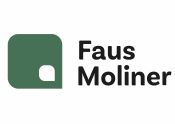Clarifying the concept of medicinal product and pharmacological action
Judgment of the Court of Justice of the European Union of 13 March 2025, Casella-med and MCM Klosterfrau, C-589/23
Capsulas Nº 259
Background
The Court of Justice of the European Union (CJEU) has again ruled on the concept of “medicinal product”, in particular on the criteria for determining when a substance exerts a pharmacological action and is therefore to be considered as such.
Before focusing on the case at hand, it is useful to briefly recall the definition of medicinal product and its interpretation by the CJEU to date. According to Directive 2001/83, a medicinal product may be so by presentation or by function. Any substance or combination of substances which may be used in or administered to human beings either with a view to restoring, correcting or modifying physiological functions by exerting a pharmacological, immunological or metabolic action, or to making a medical diagnosis is considered to be a medicinal product by function.
On the other hand, Regulation (EU) 2017/745 (following the previous definition in Directive 93/42) defines a medical device as a device intended for the diagnosis, prevention, monitoring, prediction, prognosis, treatment or alleviation of a disease without exerting its principal action by pharmacological, immunological or metabolic means. If a product exerts its principal action by pharmacological, immunological or metabolic means, it cannot be considered a medical device (Judgment of 18 January 2023, C-495/21 and C-496/21, Nasal Drops).
Finally, in case of doubt as to the classification of a product, the legal regime for medicinal products should apply, by virtue of the vis atractiva principle as per Directive 2001/83 (Judgment of 2 March 2023, C-760/21, Kwizda Pharma). This regime offers greater guarantees as medicinal products are subject to the highest standards of quality, safety and efficacy for the benefit of public health.
The facts of the case
This case arose in Germany as a result of an unfair competition claim against two companies marketing products as medical devices to prevent and treat certain urinary tract infections, the ingredients of which are D-mannose and cranberry. An association of pharmaceutical companies sought a ban on their sale as medical devices, arguing that they were in fact medicinal products, the marketing of which required prior authorisation.
The courts of first and second instance ruled in favour of the association, finding that D-mannose blocked the adhesion of bacteria to human cells, which they interpreted as a pharmacological action. This conclusion was based on the definition of “pharmacological means” set out in the MEDDEV guidance on borderline products, developed by the European Commission’s expert group, and on an expert’s report.
However, the defendant companies argued that their products should be regarded as medical devices, since for a substance to exert a pharmacological action, it must produce a significant intervention in the physiological functions of the human body. They argued that this was not the case with D-mannose as its effect was limited to preventing the attachment of bacteria to cells by reversible binding. As a result, they appealed to the German Supreme Court, which referred a question to the CJEU for a preliminary ruling on whether a substance that prevents the attachment of bacteria to human cells by reversible binding is to be considered as exerting a “pharmacological action”.
What is meant by pharmacological action?
To answer this question, the CJEU applies a purposive interpretation of EU law, analysing not only the legal text, but also its context and the objectives it pursues. In order to determine the scope of the concept of “pharmacological action”, the Court refers to the MEDDEV and the new MDCG guidance, drawn up by the European Commission to distinguish between medical devices and medicinal products, and to its own case law, according to which the concept of medicinal product must be interpreted broadly (Judgment of 20 September 2007, C-84/06, Antroposana).
According to the CJEU, “pharmacological action” designates the effects of a substance on a living organism, notably for therapeutic or preventive purposes. According to the MDCG guidance, this action involves an interaction (usually at the molecular level) between a substance (or its metabolites) and a component of the human body, which triggers, enhances, reduces or blocks physiological functions or pathological processes.
The Court notes that even a substance that does not interact directly with human cells can modify physiological functions through its interaction with other biological components, such as bacteria, viruses or parasites (Judgement of 6 September 2012, C-308/11, Chemise Fabrik).
According to the Court, the MDCG guidance requires the interaction of the substance with the organism to block the reaction of another agent. In this regard, the CJEU finds that the process by which a substance prevents bacteria from attaching to human cells constitutes a blockage of pathological processes, which makes it fall within the concept of “pharmacological action” and thus within the definition of a medicinal product.
Moreover, according to the Court, neither Directive 2001/83 nor the guidelines require that the cellular interaction must involve long-lasting binding. Therefore, the fact that a substance interacts reversibly with a cellular component does not prevent it from being regarded as exerting a pharmacological action.
Accordingly, the CJEU concludes that a substance, such as D-mannose, by preventing bacteria from attaching to human cells, blocks pathological processes, even if the interaction between the substance and the bacteria is reversible. It therefore determines that, even if the interaction is reversible, the fact that a substance prevents the attachment of bacteria to human cells constitutes a “pharmacological action” within the meaning of Directive 2001/83.
Conclusion
When dealing with the classification of a product as a medical device or medicinal product, the legal regime applicable to medicinal products must be interpreted extensively, prevailing in case of doubt. To this end, the judgment highlights the usefulness of documents such as the MEDDEV and MDCG guidance documents, which, although not legally binding, serve as a reference for interpreting EU law.
